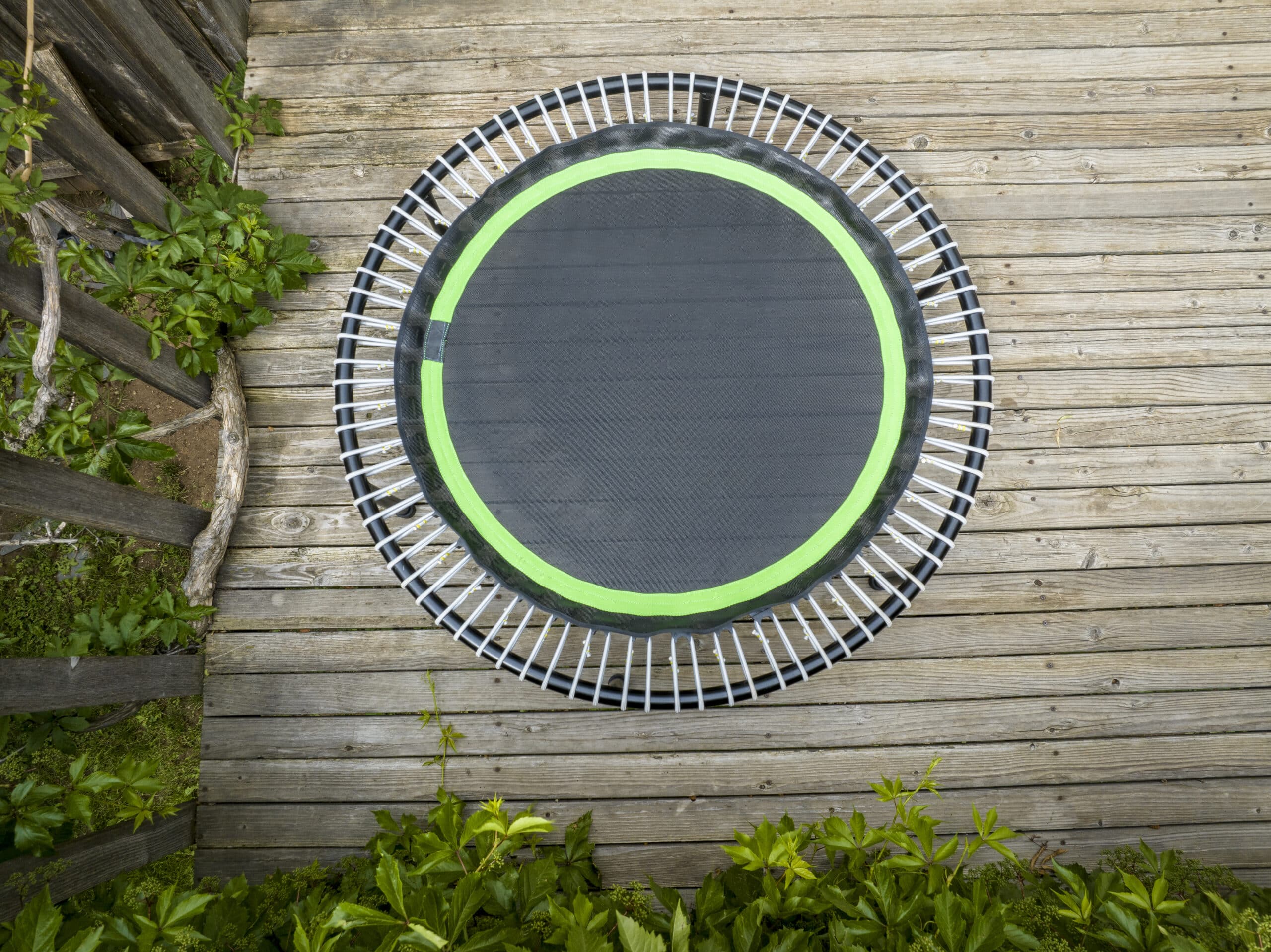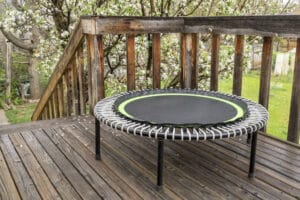Should Trampolines Be on Grass or Patio?
Key Takeaways
- Placing a trampoline on grass provides natural shock absorption, reducing the impact on joints and minimizing the risk of injuries.
- Having a trampoline on a patio offers stability and a level surface for a safer jumping experience.
- Grass allows for better air circulation, preventing the trampoline from becoming too hot, while a patio provides convenience and easy supervision.
When it comes to setting up a trampoline, one of the key decisions to make is whether to place it on grass or on a patio. Both options have their advantages and disadvantages, and the choice ultimately depends on your specific needs and preferences. In this article, we will explore the pros and cons of placing a trampoline on grass versus a patio, providing you with the information you need to make an informed decision.
Advantages of Placing a Trampoline on Grass
Placing a trampoline on grass offers several advantages. One of the main benefits is the natural shock absorption provided by the grass. When someone jumps on the trampoline, the grass helps cushion their landing, reducing the impact on their joints and minimizing the risk of injuries. Additionally, grass is relatively soft, which can make jumping on the trampoline a more comfortable experience.
Another advantage of placing a trampoline on grass is that it allows for better air circulation. Trampolines generate a lot of air movement as people jump, and having the trampoline on grass allows the air to flow freely. This can help prevent the trampoline from becoming too hot during sunny days, as the grass absorbs some of the heat.
Disadvantages of Placing a Trampoline on Grass
While there are many advantages to placing a trampoline on grass, there are also a few potential drawbacks to consider. One disadvantage is the impact it can have on the grass itself. Constant jumping and landing may cause the grass to become worn out or even damaged over time. This can result in bare patches or uneven terrain.
Furthermore, if the trampoline is left in the same spot for an extended period, it can block sunlight from reaching the grass underneath. This can lead to patchy or unhealthy grass growth. To mitigate this, it is recommended to move the trampoline on a regular basis to allow the grass to receive adequate sunlight.
Advantages of Placing a Trampoline on a Patio
Placing a trampoline on a patio also has its advantages. One of the main benefits is the stability and level surface that a patio provides. Unlike grass, which may have uneven terrain, a patio offers a solid and flat foundation for the trampoline. This can contribute to a more stable and safer jumping experience.
In addition, having a trampoline on a patio can make it more accessible and convenient. The proximity to the house allows for easier supervision, especially if you have young children using the trampoline. It also eliminates the need to walk across potentially wet or muddy grass to reach the trampoline.
Disadvantages of Placing a Trampoline on a Patio
Despite the advantages, there are a few disadvantages to consider when placing a trampoline on a patio. One of the main concerns is the lack of shock absorption compared to grass. While patio surfaces can still provide some cushioning, they are typically harder and less forgiving than grass. This can increase the impact on joints and potentially lead to a higher risk of injuries.
Another potential drawback is the heat absorption of the patio surface. Depending on the material used for the patio, it may absorb and retain heat, making it uncomfortable to jump on during hot weather. It is important to consider the climate and choose a patio material that does not become excessively hot.
Best Practices for Setting Up a Trampoline
Regardless of whether you choose to place your trampoline on grass or a patio, there are some best practices to follow. If you opt for grass, it is recommended to prepare the area by planting new grass seeds regularly and ensuring proper drainage. Moving the trampoline periodically can also help prevent damage to the grass and promote healthy growth.
If the grass underneath the trampoline becomes damaged, it can be repaired by planting lawn seeds, adding fresh soil, or using mulch. Alternatively, you may consider placing the trampoline on artificial grass, which can provide a more durable and low-maintenance surface.
For patio setups, it is crucial to ensure that the surface is level and stable. This can be achieved by using appropriate padding and ensuring that the trampoline is securely anchored to the patio. Additionally, it is important to leave enough space around the trampoline for safe jumping and to avoid any potential hazards.
Conclusion
Ultimately, the decision of whether to place a trampoline on grass or a patio depends on various factors such as personal preference, climate, and the specific needs of your family. Grass offers natural shock absorption and better air circulation, but it may require more maintenance and can be prone to damage. On the other hand, a patio provides stability and convenience, but it may lack the same level of cushioning and can become hot.
It is important to weigh the advantages and disadvantages of each option and consider the best practices for setting up a trampoline in your chosen location. By taking proper precautions and following recommended guidelines, you can ensure a safe and enjoyable trampolining experience for you and your family.
Related Websites:
- Turf Mechanic – What to Put Under a Trampoline?
- Sunshine and Play – 13 Places Where You Should and Shouldn’t Put a Trampoline
- Get Trampoline – Trampoline on Grass
- Sunshine and Play – In-Ground Trampoline Pros and Cons: What You Need to Consider
- Clever Patio – The Safe Way to Put a Trampoline on a Patio or Deck
FAQs:
Q: Is it safer to place a trampoline on grass or a patio?
Placing a trampoline on grass can provide a natural cushioning effect, reducing the risk of injuries from hard landings. However, uneven ground or holes in the grass may pose safety hazards. Placing a trampoline on a patio comes with a harder surface, which can increase impact forces on the body. It is crucial to use safety measures like padding or mats and ensure the patio can bear the weight of the trampoline.
Q: What are the durability and maintenance considerations for placing a trampoline on grass?
Placing a trampoline on grass may lead to grass stains, water damage, or grass growth beneath the trampoline. Regular maintenance, such as mowing the grass and keeping the area clean, is necessary to ensure its durability and safety.
Q: What are the durability and maintenance considerations for placing a trampoline on a patio?
Placing a trampoline on a patio can potentially scratch or damage the surface due to constant movement and friction. It is essential to regularly inspect the patio for any signs of wear and tear to maintain its durability.
Q: What additional factors should I consider when deciding between grass and patio?
When deciding between grass and patio, factors like available space, trampoline dimensions, climate and weather conditions (including wind exposure), personal preferences, and intended usage of the trampoline should be taken into account.
Q: How should I prioritize safety, durability, and maintenance when deciding where to place a trampoline?
When deciding where to place a trampoline, safety should be the top priority. Consider the natural cushioning effect of grass and the need for safety measures on a patio. Durability is crucial, so regular maintenance and inspections are necessary for both grass and patio locations. By prioritizing safety, durability, and maintenance, you can make an informed decision.






